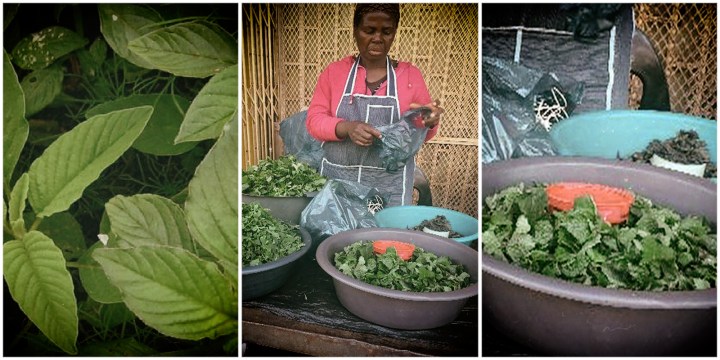KNOWLEDGE DIET
Indigenous foods study busts ‘poverty’ myth – they could help plug nutrition gap and control diseases

Foods once considered medicine have been neglected by the South African population; leaving a nutrition, sustainable diet and food security gap – these challenges resulting in one and a half million deaths in the country, a study released in the context of World Food Day has found.
The study titled “A Systematic Review of Indigenous Food Plant Usage in Southern Africa” was authored by Zoe Nomakhushe Nxusani, Mthokozisi Kwazi Zuma and Xikombiso Gertrude Mbhenyane. It focused on those in rural communities, where indigenous foods and production are more prevalent, and looked into the different factors influencing the availability, consumption, use, preparation, harvesting, beliefs and preservations of indigenous foods.
“Inadequate intake of fruits and vegetables contribute to a burden of diseases, resulting in death from gastrointestinal cancer, ischaemic cardiac disease and strokes. However, there is a significant proportion of diverse indigenous foods available in southern Africa that has been neglected, resulting in food insecurity in the countries,” the study said.
Read more in Daily Maverick: Indigenous crops: Local is not only lekker, it’s also a weapon in the climate crisis battle
One of the authors, Mbhenyane, the Department of Science and Innovation-National Research Foundation South African research chair in food environments, nutrition and health, told Daily Maverick that South Africa had a problem of food insecurity and overnutrition (those with non-communicable diseases) at the same time, and that indigenous foods could play a role in addressing food insecurity and preventing non-communicable diseases.
This was because indigenous foods “contain micronutrients and phytochemicals, which help your heart to be healthy and prevent fat clogging”.
“Indigenous foods are healthy and prevent diseases. A study done in the Eastern Cape and Limpopo showed that there were indigenous crops used to treat and prevent particular diseases…
“Most people think that indigenous foods are for poor people. When you go to the supermarket, you have limited choices for green vegetables. We need to have better production and better access of indigenous foods, even in urban areas.”
Mbhenyane added that while conducting the study, she found that people were keen to incorporate indigenous foods into their diets but that people buy what they can access; stressing that most formalised markets did not make room for indigenous foods. Some markets had clauses preventing the sourcing of locally produced indigenous foods.
Read more in Daily Maverick: Studies flagging raised risk of heart attack from ultra-processed foods prompts warning of ‘tidal wave of ill health’
Findings from the study showed that availability and accessibility were among the major factors that influence the consumption of indigenous foods.
Southern Africa has a large variety of indigenous foods, with a separate study finding that there are 23,000 different plant species in the region, 137 of which are edible. Of these, cowpeas, pumpkin leaves and blackjack are the most commonly consumed.
South Africa consumes mainly blackjack, amaranth, African cabbage and watermelon. Cowpeas and sweet potatoes are considered to be the most traditional indigenous foods due to their commercial production and therefore accessibility, the study found.
Mbhenyane said growing these foods was mainly concentrated in Limpopo, the Eastern Cape and KwaZulu-Natal, as the recent census showed that this was where most of the indigenous foods were produced due to the prevalence of small-scale farming and land accessibility.
Read more in Daily Maverick: Eating local and the importance of cultivating edible indigenous plants
Limpopo also was the highest consumer of indigenous foods, at two to three times per week. The general consumers of these foods were those in rural areas, mainly the older generation and unemployed people, while those who are employed perceived indigenous foods as “poverty foods”.
A decline in and limitation of indigenous foods was attributed to policy gaps, decreased accessibility, urbanisation, lack of preparation and knowledge, and nutritional content knowledge, the study said.
“The fact that southern African populations do not value indigenous foods and their potential advantages appears to be a significant barrier,” it noted.
“Indigenous food plants provide various social functions; they are crucial to food supply diversification efforts, and they improve food and nutrition security”. DM
















 Become an Insider
Become an Insider
Comments - Please login in order to comment.